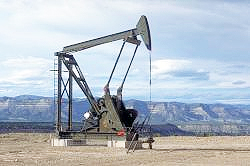Russian oil could go into self-destruction mode on price fall

(Business New Europe – bne.eu – November 11, 2014) Russia’s oil industry runs the risk of repeating the death spiral of the Soviet oil industry, should prices stay below $90, according to research by brokerage Renaissance Capital.
If the oil price were to stay well below $90 for long, Russia’s mostly state-owned oil industry could enter self-destruction mode, as it frantically tries to boost production levels needed to prop up the budget.
Russian oil is mostly state-owned and the state has a different cost curve compared to private producers: taking 75% of the oil price to support the budget. As oil prices fall, the state will need to compensate for loss of revenue by ramping up oil production, instead of cutting it as marginal wells become unprofitable.
“Stable crude volumes are more vital now than before for Russia’s fiscal stability, which means that the state may directly or indirectly encourage a ‘volume over value’ strategy to be pursued by operators,” writes Renaissance Capital’s analyst Ildar Davletshin in a research note.
Ramping up production could be achieved through innovation, but this is unlikely since Russian oil companies, because of their Soviet past, have an internal culture that “encourages meeting fixed targets on an annual business plan rather than trying new methods”. Moreover sanctions have restricted access to new Western technologies.
Russia is thus likely to try to ramp up production using obsolete home-made methods and inferior domestic or Chinese rigs. “Russia will be precipitous in trying to respond to sanctions with an ‘import substitution’ campaign”, Davletshin writes, adding that “the Russian oil field service sector has limited capacity to meet all new demand in the short term.”
“We cannot avoid a comparison with oil production in the USSR in the 1980s,” Davletshin concludes gloomily. According to Davletshin, the Soviet Union desperately needed more revenue from oil to fund the Afghanistan war, just as oil prices collapsed from $30-40 per barrel to below $15 in 1988.
As a result, the Soviet state oil industry went into overdrive to ramp up production – with disastrous results. One of the world’s top 10 oil fields – Samatlor – was largely destroyed as Soviet engineers injected too much water in desperate attempts to boost output, causing premature water break throughs. “We see increased risks of similar mistakes being repeated in the near term given a situation when volumes become critical and access to western technologies is reduced,” writes Davletshin.
